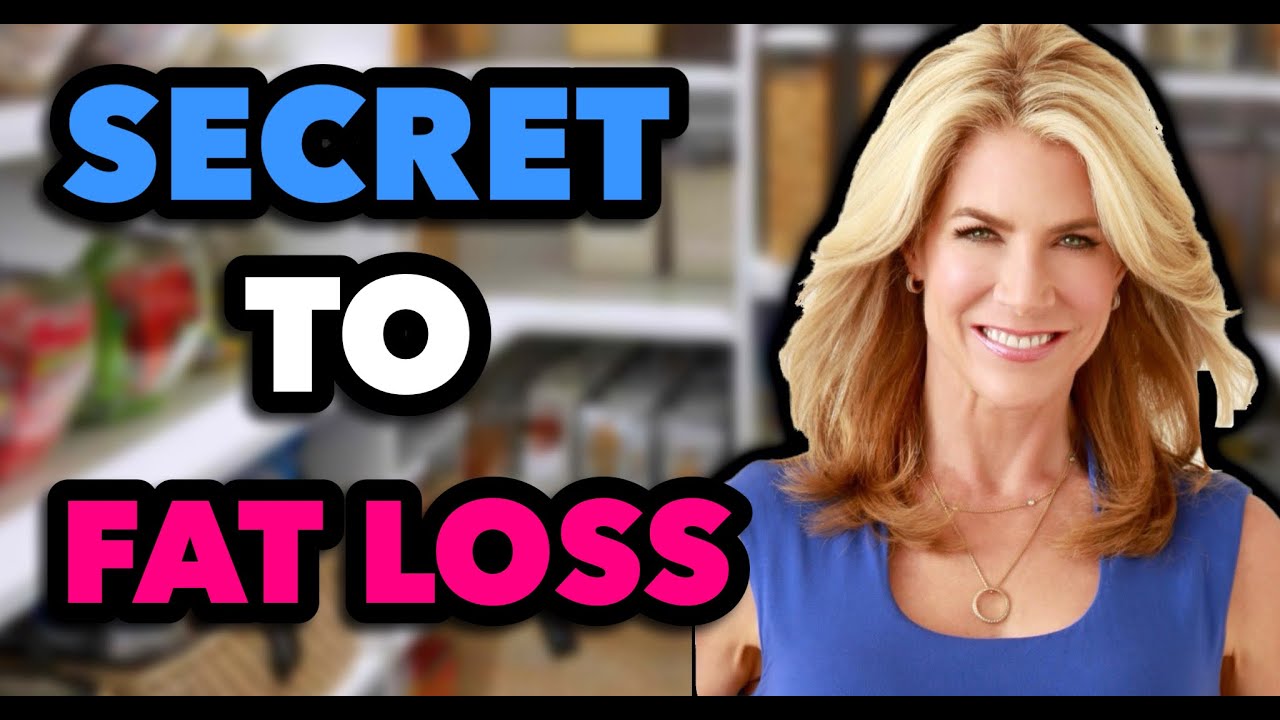My career as a health and fitness expert began in the gym in the 1980s. (Cue images of leg warmers, big hair, and bright leotards.) Since then, I’ve spent a lot of time in gyms coaching others and working out on my own. I’ve witnessed my fair share of interesting and, let’s say, unconventional approaches to fitness.
I’ve also seen a lot of otherwise-smart gym-goers make mistakes. I hate to see them set themselves up for failure, not get the results they want, and quite possibly, injure themselves.
5 Exercise Mistakes You Might Be Making
Along those lines, I see these five exercise mistakes all the time in the gym. Improving on them will help you more effectively build and maintain muscle, get lean, speed up your metabolism, and optimize your workouts.
1. Overdoing Cardio and Neglecting Strength Training
Like acid-washed jeans and bleached hair, the cardio-obsessed 80s have faded away. Yet even today, I see folks trudging on the treadmill, usually thumbing through a magazine or catching up on Real Housewives on that little TV screen.
I want to gently guide these folks into the weight room. Strength training does so many things, including boosting metabolism, increasing bone density, and steadying blood-sugar levels.
As you get older, muscle becomes critical: once you turn 30, muscle mass beings to decrease about 3-8% every decade. After 60, that loss becomes even higher.1
During prolonged periods of cardio, your body may start breaking down muscle tissue for energy. Some types, including running or cycling, can do more harm than good. They put stress on specific joints, tendons, and muscles. Over time, repetitive stress can lead to overuse injuries like shin splints, stress fractures, tendonitis, or muscle strains.
Excessive cardio can also stress your body, leading to an increase in cortisol. Chronically elevated levels of this stress hormone can interfere with muscle growth, impair recovery, and potentially contribute to weight gain and other hormonal imbalances.2
The only kind of cardio that gets great results is high-intensity interval training (HIIT), which alternates short bursts of intense exercise with periods of active recovery or rest. HIIT workouts are usually shorter than steady-state cardio and include muscle-building exercises as well. The intensity and effectiveness of HIIT can improve heart health, build muscle, and help you get lean.3
No free weights? No problem! While I love the gym for strength training, the convenience of the portable, lightweight TRX® Suspension Trainer makes it ideal for traveling and those days when I don’t have a lot of time to work out.
2. Ignoring the Importance of Rest and Recovery
I’m all about going hard at the gym. But when it comes to fitness, too much of a good thing can become detrimental. Determined to reach their goals more quickly, some people don’t allow enough time for adequate rest and recovery.
Especially as you get older, recovery days are critical to prevent burnout and injuries. When you don’t build in rest days, you’re exhausted, your immune system can crash fast, you feel awful, and your risk of injury increases. Insufficient rest can also impede progress and hinder muscle growth, undoing that hard work from your strength-training routine.
Make sure to allow each muscle group 48 hours of recovery before working them again. And refuel your body to make the most of that recovery, too.
Your best post-exercise recovery is a protein-fueled smoothie. You’ll notice that unlike my other loaded smoothies, this one doesn’t include fat or fiber. That’s because they slow down protein digestion, and after a workout you want that protein (along with some healthy carbs like frozen fruit) to go to your muscles quickly.
Sleep is the ultimate type of repair and restoration. When you’re consistently getting 7-9 hours of quality, uninterrupted sleep every night, you support muscle repair and growth, optimize muscle-building growth hormone, balance other hormones, perform your best, and reduce your risk of injury.
Ideally, you’ll fit in your workout and get great sleep. What I never, ever want you to do is cut back your sleep to fit in exercise. Even during your most time-crunched days, you can fit in optimal sleep and get an intense, full-body workout in just minutes with high-intensity interval training (HIIT).
A well-rounded workout routine includes rest days, too. When I say rest, I’m not talking about vegging out on the couch or having cocktails with your girlfriends. Even during rest days, I want you to move. On my non-workout days, I’ll take a long after-dinner walk or a hot yoga class.
ElectroReplenish is a comprehensive, all-in-one electrolyte formula designed to promote optimal hydration and health, which is especially critical around your workout. This unique, delicious-tasting formula combines the main electrolytes found in the body (potassium, sodium, chloride, and magnesium) with other beneficial ingredients to support a healthy electrolyte balance in the body and maintain optimal health.*
3. Doing the Same Exercise Routine Over and Over
One trend I’ve repeatedly witnessed in gyms: folks who do the same exercises for years on end. Because hey, if it works for a while, why mess with success?
I’ll tell you why: Repeating the same exercises and routines can eventually create a plateau and leave you burned out.
You always want to keep your body guessing. Sticking to a consistent routine may help when you first begin, but over time, your body adapts. Introducing variety and challenging your body in new ways can help you overcome plateaus, prevent boredom, and achieve better overall results.
While everyone’s different, I find that changing your exercise routine every 4-6 weeks allows enough time for your body to adapt to the previous routine and see progress, prevents stagnation, gives you an opportunity to challenge different muscle groups, and keeps things fresh.
Changing up your strength-training workout routine on a regular basis also prevents your muscles from adapting and optimizes muscle-mass gains. We call this muscle confusion, which challenges your muscles in new and unexpected ways. Keeping them guessing stimulates muscle growth, enhances strength gains, and prevents stagnation.4
If you’re feeling in a rut, get out of your comfort zone by joining a new class, trying new routines, or hiring a personal trainer.
4. You’re Not Tracking Your Progress
What you measure, you can improve. I often talk about tracking your diet and body composition with tools like a continuous glucose monitor. Monitoring your progress at the gym is equally important.
Tracking your workouts lets you see what you’re doing correctly and what needs adjusting. You can establish specific and measurable goals, such as increasing the amount of weight you lift or the number of reps you lift.
Tracking can also serve as a reminder of how far you’ve come, especially on days when you’re not super-psyched about working out. Plus, you can identify plateaus that hinder progress. When you record your workouts and see the data, you become more aware about what you should keep and what needs fixing.
Make tracking easy and you’ll be more likely to do it. Fitness apps and wearable fitness trackers are simple ways to monitor your progress. My go-to is the Cronometer, which conveniently tracks your food, movement, and more to give you direct feedback.
You can also monitor your progress with measuring tape, as well as a body-composition scale. The scale is my favorite way to track how well your workouts impact your body, including how much fat and muscle you carry.
My Resistance Training Cheat Sheet has everything you need to quickly get started on your fitness journey, including home gym essentials, an 8-week workout plan, and a progress tracker to track your sets, reps, and weights with each workout.
5. You’re Not Getting Enough Protein & Other Nutrients
When you’re strength training, your muscles undergo stress and microtears. Optimal protein and regular strength training are your one-two combo to grow stronger and more resilient.
Without sufficient protein intake, your body struggles to repair and rebuild muscle, leading to slower recovery times and limited gains. Protein helps you feel fuller for longer, too, and reduces cravings to help you keep a healthy weight.
The right nutrient support matters, too. Getting sufficient vitamins, minerals, and antioxidants support your metabolism, immune system, how well your cells function, and more. Deficiencies in even one vitamin or mineral can crash your energy levels, impair recovery, and increase susceptibility to illness or injury.
One fitness-focused nutrient that everyone should use is creatine, a naturally occurring compound found in your muscles. Creatine increases the production of adenosine triphosphate (ATP), your primary source of energy for muscle contractions.
None of the creatine products on the market met my stringent standards, so I created my own specifically for women. SHEatine provides a highly absorbable dose of this muscle-supporting, energy-sustaining compound so you can go longer and harder in the gym.*
Supplementing with creatine increases your muscle’s creatine stores and improves ATP production. You’ll have more energy available for high-intensity activities like weightlifting, sprinting, or explosive movements, allowing you to push harder and for longer durations.
Creatine can support muscle recovery, too. It aids in replenishing ATP levels post-exercise, which can expedite recovery time and reduce muscle damage.5
Optimize Your Workouts to Age Powerfully
If you’re like me, you don’t have hours to work out (and with this workout, you don’t need much time). Exercise mistakes, which can jeopardize your progress and even create injury, are one of the most time-consuming obstacles to working out.
Address these five common-but-fixable mistakes and you’ll have what it takes to optimize your workouts, maximize results, and stay on track towards your fitness goals. When you’re consistently strength training correctly and getting optimal protein, you build muscle, stay lean, support healthy blood sugar and hormone levels, and get the most out of your exercise.
Whether you’re plant-based or an omnivore, I have a protein powder for you! Every serving of my All-In-One Shake packs 20+ grams of high-quality, muscle-building protein, along with nutrients, fiber, phytonutrients, and more so you can stay on top of your fitness plan every single workout.*
References:
- Volpi E, Nazemi R, Fujita S. Muscle tissue changes with aging. Curr Opin Clin Nutr Metab Care. 2004 Jul;7(4):405-10. doi: 10.1097/01.mco.0000134362.76653.b2. PMID: 15192443; PMCID: PMC2804956.
- Thau L, Gandhi J, Sharma S. Physiology, Cortisol. [Updated 2022 Aug 29]. In: StatPearls [Internet]. Treasure Island (FL): StatPearls Publishing; 2023 Jan-. Available from: https://www.ncbi.nlm.nih.gov/books/NBK538239/
- D’Amuri A, Sanz JM, Capatti E, Di Vece F, Vaccari F, Lazzer S, Zuliani G, Dalla Nora E, Passaro A. Effectiveness of high-intensity interval training for weight loss in adults with obesity: a randomised controlled non-inferiority trial. BMJ Open Sport Exerc Med. 2021 Jul 20;7(3):e001021. doi: 10.1136/bmjsem-2020-001021. PMID: 34367654; PMCID: PMC8292807.
- Kassiano W, Nunes JP, Costa B, Ribeiro AS, Schoenfeld BJ, Cyrino ES. Does Varying Resistance Exercises Promote Superior Muscle Hypertrophy and Strength Gains? A Systematic Review. J Strength Cond Res. 2022 Jun 1;36(6):1753-1762. doi: 10.1519/JSC.0000000000004258. Epub 2022 Apr 1. PMID: 35438660.
- Wax B, Kerksick CM, Jagim AR, Mayo JJ, Lyons BC, Kreider RB. Creatine for Exercise and Sports Performance, with Recovery Considerations for Healthy Populations. Nutrients. 2021 Jun 2;13(6):1915. doi: 10.3390/nu13061915. PMID: 34199588; PMCID: PMC8228369.
*These statements have not been evaluated by the Food & Drug Administration. Products mentioned are not intended to diagnose, treat, cure, or prevent any disease. The views in this blog by JJ Virgin should never be used as a substitute for professional medical advice. Please work with a healthcare practitioner concerning any medical problem or concern.





